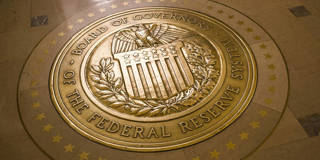As in the stagflationary 1970s, the US Federal Reserve is once again denying that its own policies are the reason for a recent surge of inflation, even though there is good reason to think that they are. It is not too late to learn from past mistakes and reverse course – but the clock is quickly ticking down.
STANFORD – Fifty years ago, on June 22, 1971, US Federal Reserve Chair Arthur Burns wrote a memorandum to President Richard Nixon that will long live in infamy. Inflation was picking up, and Burns wanted the White House to understand that the price surge was not due to monetary policy or to any action that the Fed had taken under his leadership. The issue, rather, was that “the structure of the economy [had] changed profoundly.” Accordingly, Burns was writing to recommend “a strong wage and price policy”:
“I have already outlined to you a possible path for such a policy – emphatic and pointed jawboning, followed by a wage and price review board (preferably through the instrumentality of the Cabinet Committee on Economic Policy); and in the event of insufficient success (which is now more probable than it would have been a year or two ago), followed – perhaps no later than next January – by a six-month wage and price freeze.”
Perhaps owing to Burns’s reputation as a renowned scholar (he was Milton Friedman’s teacher) and his long experience as a policymaker, the memo convinced Nixon to proceed with a wage and price freeze, and to follow that up with a policy of wage and price controls and guidelines for the entire economy. For a time after the freeze was implemented, the controls and guidelines seemed to be working. They were even politically popular for a brief period. Inflation inched down, and the freeze was followed by more compulsory controls requiring firms to get permission from a commission to change wages and prices.

STANFORD – Fifty years ago, on June 22, 1971, US Federal Reserve Chair Arthur Burns wrote a memorandum to President Richard Nixon that will long live in infamy. Inflation was picking up, and Burns wanted the White House to understand that the price surge was not due to monetary policy or to any action that the Fed had taken under his leadership. The issue, rather, was that “the structure of the economy [had] changed profoundly.” Accordingly, Burns was writing to recommend “a strong wage and price policy”:
“I have already outlined to you a possible path for such a policy – emphatic and pointed jawboning, followed by a wage and price review board (preferably through the instrumentality of the Cabinet Committee on Economic Policy); and in the event of insufficient success (which is now more probable than it would have been a year or two ago), followed – perhaps no later than next January – by a six-month wage and price freeze.”
Perhaps owing to Burns’s reputation as a renowned scholar (he was Milton Friedman’s teacher) and his long experience as a policymaker, the memo convinced Nixon to proceed with a wage and price freeze, and to follow that up with a policy of wage and price controls and guidelines for the entire economy. For a time after the freeze was implemented, the controls and guidelines seemed to be working. They were even politically popular for a brief period. Inflation inched down, and the freeze was followed by more compulsory controls requiring firms to get permission from a commission to change wages and prices.